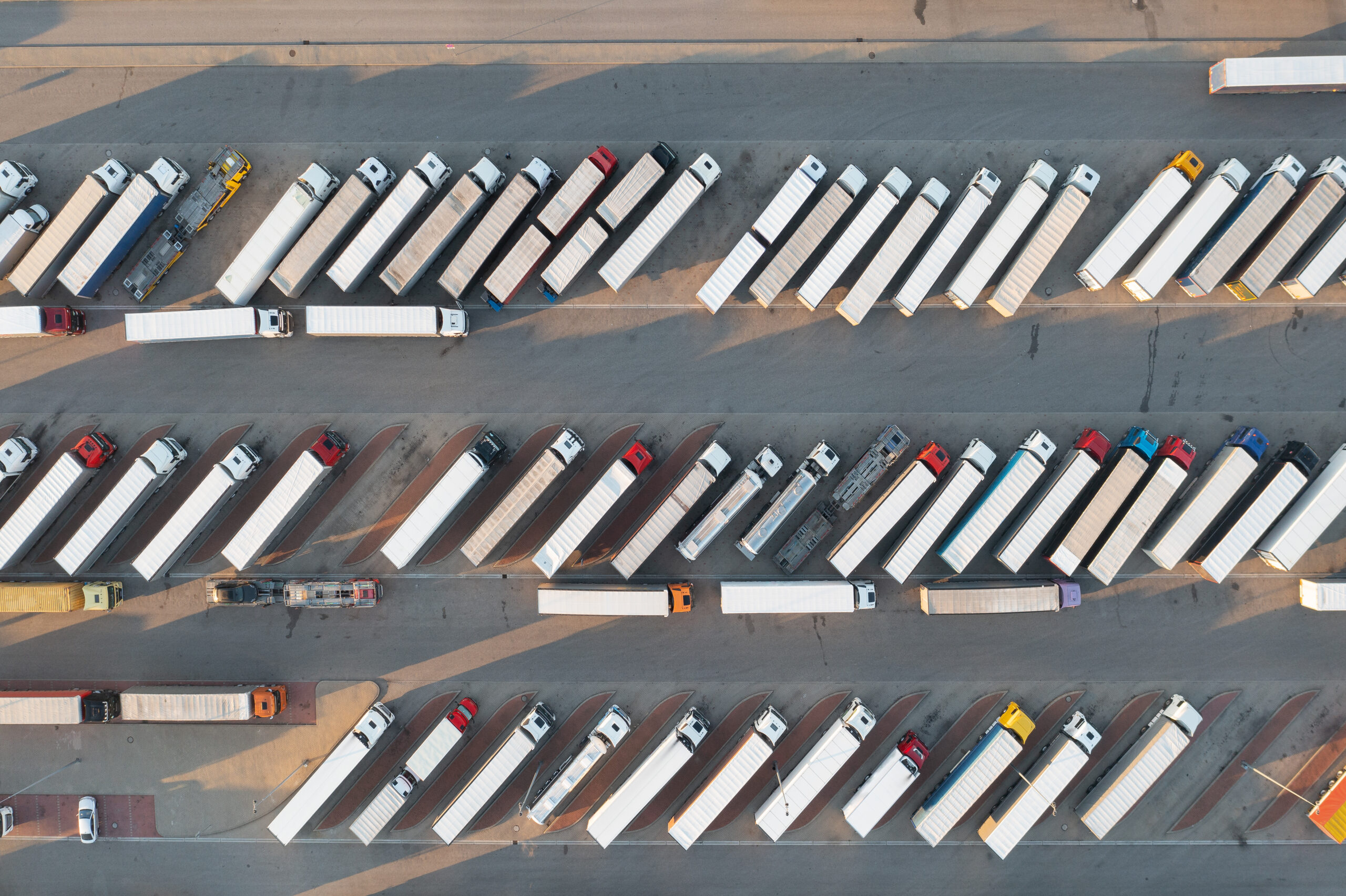In 2024, the trucking industry faces significant challenges and stands at the edge of a new era of change. The key to success lies in adapting to evolving circumstances, including changes in regulations, a shortage of workers, shifts in the economy, and a commitment to being environmentally friendly. Adaptability is essential, and trucking companies that can effectively respond to these trends will likely see lasting growth and improvements in their service.
This article examines vital trucking trends affecting the industry, such as sustainability, digital innovation, regulatory compliance, and workforce development. Through knowledge and insight, companies can adapt and seize opportunities to achieve sustainable growth and operational excellence.
Overview of Trucking Industry Trends in 2024
In 2024, the trucking industry faces an intricate web of trends:
- Green Trucking and Sustainability: The industry is transitioning towards sustainability through the adoption of electric and alternative fuel vehicles, emissions reduction strategies, and infrastructure development. These efforts highlight the sector’s commitment to minimizing its environmental impact despite facing infrastructure and policy hurdles, and to positioning sustainability as a strategic business advantage.
- Advanced Technologies: The trucking industry is undergoing a digital revolution integrating AI, telematics, blockchain, and IoT technologies. These advancements are optimizing logistics operations, enhancing fleet management, improving data privacy and security, and driving efficiency, safety, and environmental friendliness, securing significant competitive advantages for companies.
- Workforce Management: To address the critical driver shortage, the industry is focusing on boosting recruitment, raising wages, and improving job conditions. Efforts include competitive salaries, better work-life balance, and enhanced driver amenities, making trucking an attractive career choice and demonstrating the industry’s commitment to its workforce.
- Regulatory Adaptation: Navigating regulatory changes is essential for the trucking industry, with companies investing in technologies to ensure compliance, especially regarding emissions standards, safety regulations, and compliance monitoring. These adaptations demonstrate a commitment to environmental stewardship, safety, and operational efficiency.
- Market Dynamics: Companies are adapting to rising operational costs, navigating economic uncertainties, and managing capacity to remain competitive and profitable. Monitoring market conditions and consumer behavior is vital for strategic planning in both the TL and LTL sectors.
A Closer Look at the Key Trucking Trends of 2024
Emerging trucking trends urge companies to innovate and adapt or risk falling behind. Understanding and acting on these trends is crucial for businesses as they reshape the industry. Let’s explore these changes, assess their impacts, and discuss strategies for companies to navigate them and maintain a competitive edge.
Green Trucking and Sustainability
The trucking industry is moving towards more sustainable trucking practices, driven by environmental concerns and economic incentives. This shift includes adopting electric and alternative-fuel vehicles, implementing emissions reduction strategies, and viewing sustainability as a competitive edge. Despite infrastructure and policy challenges, the industry’s commitment to reducing its environmental impact is stronger than ever.
Electric and Alternative-Fuel Vehicles
Electric and alternative fuel vehicles are gaining traction in trucking as viable solutions to reduce greenhouse gas emissions. Companies are increasingly incorporating electric trucks, such as Freightliner eCascadias, and vehicles powered by biofuels, hydrogen, and natural gas into their fleets. This shift is supported by regulatory mandates in places like California, pushing for a transition to zero-emission vehicles. The adoption of these technologies signifies a significant step towards achieving sustainability goals.
Emissions Reduction Strategies
The industry also focuses on reducing emissions through advanced control systems and retrofitting existing fleets with trailer aerodynamics. These efforts are crucial for complying with stricter environmental regulations and minimizing the ecological footprint of trucking operations. Companies can bridge the gap to a fully sustainable future by improving fuel efficiency and reducing pollutants, even as they continue to rely on conventional vehicles.
Sustainability as a Competitive Edge
Embracing sustainability is a wise business strategy that offers benefits beyond environmental protection. Companies that invest in green technologies and practices experience reduced operational costs, enhanced brand reputation, and increased attractiveness to eco-conscious customers. This holistic approach to sustainability not only benefits the planet but also bolsters a company’s market position.
Infrastructure Development
Critical to green trucking’s success, infrastructure development for electric and alternative-fuel vehicles is expanding. Investments in charging stations and fueling infrastructure are essential to support the growing adoption of these vehicles. This development facilitates the practical use of green technologies and underscores the industry’s readiness to embrace a sustainable future, ensuring the longevity and efficiency of eco-friendly transport solutions.
Advanced Technologies
Advanced technologies such as AI, telematics, blockchain, and the Internet of Things (IoT) are revolutionizing the trucking industry. By enhancing logistics operations, these digital advancements make trucking more efficient, safer, and environmentally friendly. Companies leveraging these technologies can optimize routes, manage fleets more effectively, and secure significant competitive advantages.
Digital Freight Platforms
Digital freight platforms are crucial for modernizing the logistics sector. They connect shippers and carriers efficiently to reduce empty miles and minimize the time and effort involved in manual brokerage processes. These platforms leverage AI to improve matchmaking between cargo and transportation, enhancing the speed and reliability of freight logistics.
AI and Telematics
AI and telematics are leading the way in fleet management efficiency. These technologies offer predictive analytics for maintenance, route optimization, and driver performance, leading to considerable cost savings and improved safety measures. AI in analyzing telematics data allows for real-time adjustments and foresight, preventing issues before they arise and ensuring the fleet operates at peak efficiency.
Data Privacy and Security
Privacy and security are becoming increasingly important with the increase in digital data collection. Trucking companies must implement strong cybersecurity measures to protect sensitive data from breaches and unauthorized access. This includes encrypting data transmissions, regularly updating security protocols, and training staff on cybersecurity best practices to safeguard against evolving threats.
Blockchain and IoT
Integrating Blockchain and IoT technologies shifts toward greater efficiency and security in the trucking industry. Blockchain ensures transparent, secure transactions and streamlined supply chain management, while IoT devices provide real-time insights into fleet operations, enabling predictive maintenance and optimized routing. Together, they enhance operational efficiency, reduce costs, and improve cargo security.
Workforce Management
Although there has been improvement in the last few years, the trucking industry continues to face a critical driver shortage. Companies are boosting recruitment, raising wages, and improving job conditions to combat this. Today, trucking offers notable growth potential, stability, and competitive pay, making it an attractive career choice. This shift demonstrates the industry’s dedication to resolving its workforce challenges.
Competitive Salaries
In response to the driver shortage, trucking companies are increasing salaries and enhancing benefits packages to attract new drivers and retain existing ones. Average trucking salaries are higher than ever, and companies are increasingly offering health benefits, retirement plans, and other perks to make the trucking profession more attractive and financially rewarding.
Work-Life Balance
As companies recognize the importance of drivers’ quality of life, work-life balance is a priority. Trending initiatives include flexible scheduling options, increased home time, and efforts to reduce drivers’ time away from home. By addressing one of the main concerns of potential drivers, companies hope to draw more people into the profession.
Driver Amenities
The trucking industry is investing in technology to simplify drivers’ tasks and improve safety, such as autonomous driving features, ergonomic cabin designs, and health and wellness programs. Additionally, providing amenities like better truck stops, premium roadside assistance, and access to fitness and healthcare services on the road can significantly enhance drivers’ overall job satisfaction.
Regulatory Adaptations
Change is the only constant in the trucking industry, particularly concerning the regulatory frameworks that govern operations across various domains. As a result, companies are proactively aligning regulations with their business model so that they can maintain compliance, demonstrate their commitment to the environment, and appeal to consumers and investors who are ecologically and safety-conscious.
Emissions Standards
The trucking industry’s efforts to curb emissions continue intensifying, particularly under the EPA’s Clean Truck Plan. In late 2022, the EPA finalized new standards for heavy-duty trucks starting with model year 2027, enforcing standards that are more than 80% stronger and signaling a significant leap towards cleaner trucking solutions. The Clean Truck Plan and initiatives like the Carbon Pledge underscore a long-term commitment to reducing the trucking industry’s environmental impact.
Safety Regulations
Regulatory enhancements in the trucking industry affirm its safety commitment. The FMCSA’s ongoing Safety Measurement System (SMS) improvements aim to support the US DOT’s zero fatalities goal. In addition, from November 18th, 2024, the CDL Drug and Alcohol Clearinghouse’s second rule will revoke privileges for drivers with substance abuse violations, further prioritizing safety on the roads.
Compliance Monitoring
Investing in advanced compliance monitoring technologies is crucial for adapting to regulatory changes. This includes the FMCSA’s proposed creation of an independent appeals board for its DataQs system, providing a more transparent and equitable process for challenging safety violations. These technologies can help companies stay compliant, streamline operations, improve safety, and reduce costs.
Market Dynamics
In 2024, the trucking industry faces a complex landscape shaped by cost pressures and market and demand fluctuations. Companies must refine their pricing and operational tactics to remain competitive and profitable amidst these changes.
Cost Pressures and Freight Rates
Economic forecasts suggest that while demand for freight services remains robust, trucking companies face mounting cost pressures. Factors such as rising fuel prices, increased driver wages, and elevated interest rates for fleet financing contribute to higher operating expenses. Therefore, freight rates will likely rise as trucking companies strive to maintain profitability despite escalating costs.
Demand Side Dynamics
Despite economic uncertainties, economists agree that demand will continue to strengthen. Forecasts indicate a sustained expansion supported by monetary policy adjustments to stimulate economic growth. However, supply chain disruptions and geopolitical uncertainties could unpredictably impact demand dynamics. Closely monitoring market conditions and consumer behavior will be vital to managing capacity and meeting evolving demand patterns.
TL and LTL Market Variability
TL and LTL markets exhibit notable variability affecting pricing and operational strategies. TL’s diversity, including dry van and flatbed, influences pricing trends and requires astute planning for a projected market upturn in late 2024. The LTL sector, meanwhile, is adjusting after 2023’s disruptions, with pricing discipline amidst economic challenges. The health of the industrial economy and expected volume increases will significantly impact LTL pricing strategies in 2024.
Get Ahead of Trucking Trends With TruckLabs
Trucking trends in 2024 weave a complex yet stimulating narrative for the industry, emphasizing the importance of staying ahead through trucking innovation, adaptability, and a deep understanding of evolving landscapes.
TruckLabs is leading the evolution with pioneering solutions like TruckWings. Our flagship product showcases our dedication to sustainability and efficiency, directly aligning with the industry’s push toward a greener future.
Let TruckLabs guide you through the 2024 trucking trends, ensuring your journey toward sustained growth and unparalleled service. Start transforming your fleet’s future today with TruckLabs. Learn more about our customer’s success or contact us today.









